The Importance Of Indoor Air Quality For Pet Health And Wellness
I have always been an animal lover ever since I was a child. I consider my pets as part of my family, and like any other family member, I prioritize their health and wellness. But did you know that indoor air quality plays a crucial role in the overall well-being of your pets? Yes, you read that right. Your pets could be facing health challenges due to the air quality in your home. As pet owners, it is our responsibility to make sure that our furry friends are living in a healthy environment. In this blog, we will discuss the importance of indoor air quality for pet health and wellness, and the measures we can take to ensure that their surroundings are free from harmful contaminants that can affect their health. So, let's dive in and discover how taking small measures can make a massive difference in your pet's quality of life.
Ensuring that your pet is not exposed to airborne particulates such as dust, pollen, mold is an innovative attractive idea for pet owners who prioritize their pet's health wellness. Indoor air quality plays a significant role in promoting respiratory health, and it is the responsibility of pet owners to take care of their animals' overall well-being. Here are some tips and tricks to ensure that your pet is not exposed to airborne particulates:
1. Keep your home clean: Regularly clean your carpets, floors, and furniture to minimize the accumulation of dust and pet dander. Use a vacuum cleaner with a HEPA filter to trap small particles effectively.
2. Ventilate your home: Proper ventilation can improve indoor air quality significantly. Open windows and doors to increase airflow and reduce humidity levels.
3. Use air purification systems: Air purifiers can effectively remove harmful particulates from the air, such as pollen, pet dander, and mold. Choose a high-quality air purifier designed for pet owners.
4. Change air filters: Regularly change your home's air filters to keep the air clean and healthy. Consider using filters with a MERV rating of 8 or higher to capture smaller particulates.
5. Monitor outdoor air quality: Monitor outdoor air quality levels to avoid exposing your pet to harmful particulates. Keep your pets indoors when air quality is poor.
6. Bathe your pets regularly: Bathing your pets regularly can help reduce the amount of pet dander and hair in your home. Use pet-safe shampoos and conditioners.
A basic requirement for ensuring your pet's respiratory health and well-being is the protection they receive from airborne particulates. With proper care, you can help your pets live a healthy and happy life.
Dust and vacuum regularly to reduce pet dander
Maintaining good indoor air quality is crucial for the health and wellbeing of your family and pets. One common contributor to poor indoor air quality is pet dander. Pets shed dead skin cells (dander) which can accumulate in carpets, furniture and air ducts, leading to allergies and respiratory problems. Fortunately, regular dusting and vacuuming can significantly reduce pet dander, ensuring that your home has healthy and clean indoor air quality.
Here are some tips and tricks to reduce pet dander related to indoor air quality:
1. Vacuum your carpets at least once a week using HEPA filters. High-Efficiency Particulate Air (HEPA) filters are designed to trap tiny particles like pet dander, mold, and pollen, thereby enhancing the quality of your indoor air.
2. Clean floors and furniture surfaces regularly with a damp cloth or mop. Dry-dusting can disturb pet dander, causing it to settle in the air and trigger allergies.
3. Keep pets off beds and furniture, or use washable covers that you can clean and sanitize regularly.
4. Bathe your pets frequently using hypoallergenic shampoos to minimize excess shedding and dander.
5. Clean your pet's bedding and toys regularly as they can harbor dander and dust mites.
6. Change HVAC (Heating Ventilation and Air Conditioning) filters every 30-90 days to prevent the buildup of pet dander and other pollutants.
7. Use a HEPA air purifier to reduce pet dander and other airborne pollutants inside your home.
Pet dander can negatively affect indoor air quality, which is why pet owners need to be aware of its potential dangers. By adopting these tips and tricks, you can maintain a clean and healthy environment for both your family and pets while reducing the risks of respiratory problems and allergies.
Monitor humidity levels to prevent pet allergies and other respiratory issues
The idea of monitoring humidity levels to prevent pet allergies and other respiratory issues related to indoor air quality is highly creative and attractive. It's a key responsibility of every pet owner to ensure that their pets live in a healthy environment, free from allergens and pollutants. The air quality of our indoor spaces plays a crucial role in the overall health of both pets and humans. Monitoring humidity levels is one effective way to maintain good indoor air quality. Here are some tips and tricks to achieve this:
1. Invest in a humidistat: A humidistat is a device that helps monitor the humidity levels in your indoor space. It's a handy tool to have, especially if you're concerned about pet allergies and respiratory issues related to poor air quality.
2. Use an air purifier: An air purifier is another excellent tool to help maintain good indoor air quality. It helps remove impurities such as dust, dander, other allergens from the air. There are several types of air purifiers available in the market, and it's important to choose one that is ideal for your space.
3. Improve ventilation: Proper ventilation is crucial in maintaining good indoor air quality. Ensure that your space is well-ventilated, especially if you have pets. Open windows regularly to allow fresh air to circulate in your home.
4. Regular cleaning: Regular cleaning of your home is vital in maintaining good indoor air quality. Ensure that your home is free from pet dander, hair, and any other allergens that could affect your pet's health.
5. Control moisture: Controlling moisture is an effective way to maintain good indoor air quality. High humidity levels can encourage mold and mildew growth, which can cause respiratory issues. Use moisture control products and ensure that your home is properly ventilated to prevent moisture buildup.
6. Regular HVAC maintenance: Your HVAC system plays a significant role in maintaining good indoor air quality. Ensure that you schedule regular maintenance services to keep your system in optimal condition.
The best way to ensure the health and well-being of your pets and family members is to maintain high indoor air quality. Monitoring humidity levels is one way to achieve this, and implementing the tips and tricks mentioned above will help you maintain optimal indoor air quality.
Use air purifiers to reduce allergens and other airborne contaminants
1. Choose an air purifier specifically designed to address indoor air quality concerns such as allergies, asthma, other respiratory issues.
2. Place the air purifier in a central location within your home or office to ensure optimal coverage.
3. Keep doors and windows closed to prevent outdoor pollutants from entering the space.
4. Regularly clean and replace air filters to maintain the air purifier's effectiveness.
5. Consider using additional methods to improve indoor air quality such as frequent vacuuming, using natural cleaning products, and increasing ventilation.
6. Monitor indoor humidity levels and use a dehumidifier if necessary to prevent mold and mildew growth.
7. Research and compare air purifiers to find the best one for your specific needs and budget.
8. Educate yourself and others about the importance of indoor air quality and the benefits of using air purifiers.
Avoid smoking and burning candles to limit exposure to secondhand smoke and other pollutants
Improving indoor air quality is essential for a healthy and comfortable living space. The idea of avoiding smoking and burning candles may seem simple, but it is an effective way to limit exposure to secondhand smoke and other pollutants. Here are some tips and tricks on how to implement this idea:
1. Establish a no-smoking policy inside your home. This includes cigarettes, e-cigarettes, and any other tobacco products.
2. If you or someone in your household smokes, do it outside and away from any open windows or doors.
3. Use natural air fresheners such as essential oils, plants, baking soda to keep your home smelling fresh without adding pollutants to the air.
4. Opt for non-toxic candles made from soy or beeswax. Be sure to trim the wick before lighting and avoid burning for long periods.
5. Invest in air purifiers with HEPA filters to eliminate other air pollutants like dust, pet dander, and pollen.
6. Open your windows regularly to let in fresh air and improve ventilation.
By avoiding smoking and burning candles, you can significantly improve indoor air quality and promote a healthier living environment for you and your loved ones. Remember, a little effort goes a long way in ensuring clean and fresh air in your home.
Opt for natural cleaning products to limit your pet’s exposure to harsh chemicals
When looking to improve your indoor air quality for your furry friend, opting for natural cleaning products can make a big difference. Here are some tips and tricks to keep in mind:
1. Look for plant-based and biodegradable cleaning products that have minimal impact on the environment.
2. Use vinegar and baking soda as natural alternatives to harsh chemicals for cleaning surfaces like countertops and floors.
3. Avoid using air fresheners and scented candles as they can contain harmful chemicals that can negatively impact your pet's health.
4. If your pet has allergies or sensitivities, try using hypoallergenic cleaning products or those specifically designed for pets.
5. Implement a regular cleaning routine to reduce the buildup of pet hair and dander, which can contribute to poor air quality.
By making simple changes to the cleaning products you use in your home, you can ensure that your pet's exposure to harmful chemicals is limited, providing them with a healthier living environment.
Avoid using aerosol sprays or plug-in air fresheners to maintain healthy air quality
Air quality indoors is crucial for a healthy lifestyle, and many people resort to using aerosol sprays or plug-in air fresheners in order to maintain a fresh atmosphere. However, these products contain harmful chemicals that can ultimately harm the indoor environment. To promote healthy indoor air quality, avoiding the use of these products is an excellent creative idea. It is essential to adopt alternative methods that can help maintain healthy air quality indoors. Here are some tips and tricks for how to do so:
1. Use essential oils: Essential oils are a natural way to freshen up the air without negative consequences. Using an essential oil diffuser can create the same fresh ambiance as a plug-in air freshener.
2. Open the windows: Proper ventilation is essential for maintaining good indoor air quality. Opening the windows regularly will allow fresh air to circulate and clear out the pollutants.
3. Utilize natural cleaning products: Many cleaning products contain toxic chemicals that negatively affect indoor air quality. Using natural, organic cleaning products can ensure a safer environment.
4. Keep plants indoors: Plants are an excellent way to purify the air naturally. They absorb pollutants and release oxygen, making them a natural way to clean indoor air.
5. Avoid smoking indoors: Smoking releases harmful chemicals into the air that stay in the environment for a long time. Avoid smoking indoors or near open windows to prevent these chemicals from spreading inside.
As a result, avoiding aerosol sprays and plug-in air fresheners in your home can help maintain a healthier environment. Implement these tips and tricks to ensure a clean and wholesome living space. Remember, prioritizing indoor air quality should be a crucial aspect of your life.
Make sure fresh air is circulating through your home to reduce the build-up of pollutants
– Open windows and doors regularly to let fresh air flow in and polluted air out. This can help reduce the concentration of pollutants, allergens, and viruses inside your home.
– Use exhaust fans while cooking, showering, or using cleaning products to help remove smoke, moisture, and chemicals from your indoor air. This can prevent the growth of mold, mildew, and bacteria that thrive in damp environments.
– Avoid smoking or using combustible appliances indoors, such as candles, incense, space heaters. These can release harmful chemicals, particulate matter, and carbon monoxide that can affect your health and indoor air quality.
– Keep your HVAC system clean and well-maintained. Change air filters regularly to prevent dust, pollen, and other particles from accumulating in the ducts and causing allergies or respiratory problems.
– Use natural ventilation methods, such as air purifying plants, air-cleaning devices, or DIY air filters, to supplement your indoor air quality efforts. Some indoor plants, like spider plants, peace lilies, or snake plants, can help remove airborne toxins and pollutants from the air.
– Monitor your indoor air quality with a digital device, like a smart air purifier or a smart thermostat. This can help you track the temperature, humidity, and pollution levels in your home and adjust your ventilation strategies accordingly.
– Educate yourself and your family about indoor air quality and its impact on health. Learn about the common sources of indoor pollution, such as dust mites, pet dander, VOCs, and radon, and take preventive measures to reduce their exposure.
– Practice good hygiene habits by washing your hands regularly, using disinfectants as needed, and avoiding contact with sick or infected people. This can help prevent the spread of germs and reduce the risk of respiratory infections and allergies.
Keywords: indoor air quality, fresh air, pollutants, allergens, ventilation, exhaust fans, HVAC system, air filters, air purifying plants, air-cleaning devices, smart air purifier, smart thermostat, hygiene, germs.
Test for radon or other harmful gases in your home, if necessary
1. Know the Risks: Radon is one of the most common and dangerous indoor air pollutants that can cause serious health issues like lung cancer if you are exposed to it for a long time. Other harmful gases include carbon monoxide, nitrogen dioxide, formaldehyde, and other volatile organic compounds. Knowing the risks involved, it's important to test for these pollutants and take proper measures to protect yourself and your family.
2. Testing Tools: There are different types of testing tools available for measuring indoor air quality. Some of the most common ones are passive devices, which include charcoal-based test kits, and active devices that use electronic sensors to detect gases. For accurate results, it's essential to follow the manufacturer's instructions and use the right testing tool that matches your requirements.
3. Testing Locations: Testing devices should be placed at appropriate locations to obtain accurate air quality readings. For example, for radon testing, a testing kit should be placed in the lowest living area of your home (such as your basement) while for other pollutants, they should be placed in the areas where these pollutants are most likely to accumulate.
4. Taking Control: After the initial testing, you should take control of the situation. If your indoor air quality reading reveals high levels of harmful gases, you should take measures to reduce or eliminate their sources. For example, effective ways to control radon are through proper ventilation or installing a radon mitigation system. Similarly, for other pollutants, you can reduce their sources by using eco-friendly cleaning products, improving ventilation, and maintaining your HVAC system at regular intervals.
5. Regular Testing: Keep in mind that the air quality of your home can change over time, depending on various factors like climate changes, structural changes, etc. Therefore, it's important to conduct regular tests and keep monitoring the indoor air quality to ensure a safe and healthy living environment.
As a result, it is essential to test your home for harmful gases to protect yourself and your family from potential health risks. Regular testing and taking proper control measures can help you maintain a safe and healthy indoor environment. Remember, your home is your haven, and it's your responsibility to ensure that it stays protected at all times.
Have your pet’s environment professionally inspected for potential indoor air quality risks
Keeping your home healthy starts with fortifying your home's air quality. If you have pets, it's important that their living conditions are safe and healthy. Here are some tips and tricks when it comes to having your pet's environment professionally inspected for potential indoor air quality risks:
1. Schedule regular air quality inspections- It is important to have your home inspected for indoor air quality risks routinely. This inspection can help identify potential risks and help address them before they become a problem.
2. Check air filters- Ensure that you frequently check and change your air filters. Dirty air filters can lead to poor indoor air quality, which can cause respiratory issues for both you and your pets.
3. Keep the house clean- Having a clean home is essential to ensuring good indoor air quality. Regular cleaning of carpets, bedding, and furniture can help reduce the amount of pet dander and dust in the air, improving the overall air quality of your home.
4. Keep your pets clean- Keeping your pets clean is another vital way to ensure that your environment is healthy. Regular grooming, bathing, and brushing can help reduce the amount of pet hair and dander in your home.
5. Consider investing in an air purifier- An air purifier can help remove airborne pollutants and particulates from the air. This can be beneficial for pets with allergies or respiratory issues.
It is essential to provide a safe and healthy environment for your pet in order to ensure their good health. By having your pet's environment professionally inspected for potential indoor air quality risks, you can identify any harmful conditions and take steps to address them.
Conclusion
Our beloved pets should be able to breathe fresh air indoors to maintain their health and well-being. Avoiding harmful pollutants like dust, pollen, and mold is crucial for preventing respiratory infections and allergies. Simple steps like dusting, vacuuming, and using air purifiers can significantly improve the indoor air quality and reduce the risk of health concerns for our pets. Additionally, avoiding smoking and burning candles can limit the exposure to secondhand smoke and other pollutants, creating a healthier and safer environment for our pets. By taking these simple steps, we can make sure that our pets stay happy and healthy for many years to come. So, let's prioritize the indoor air quality in our homes and give our pets the healthy and happy life they deserve.

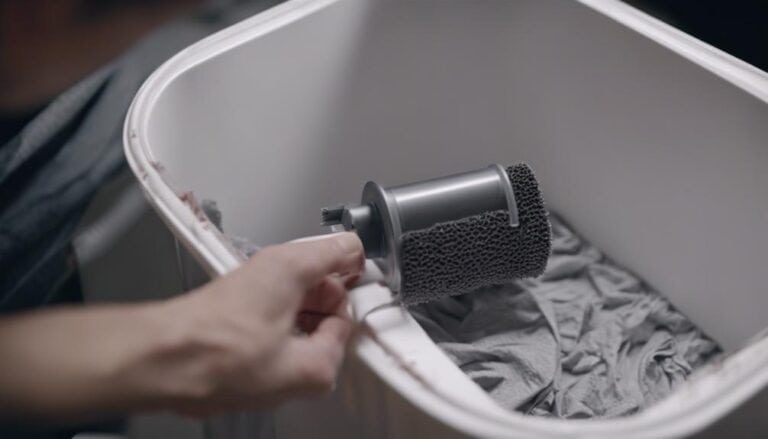
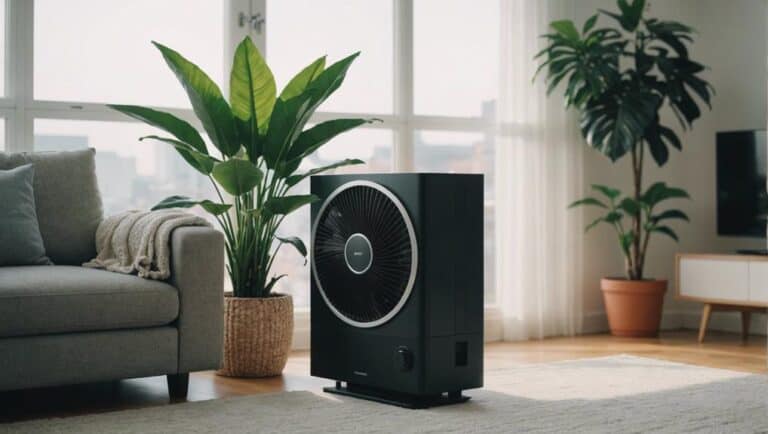
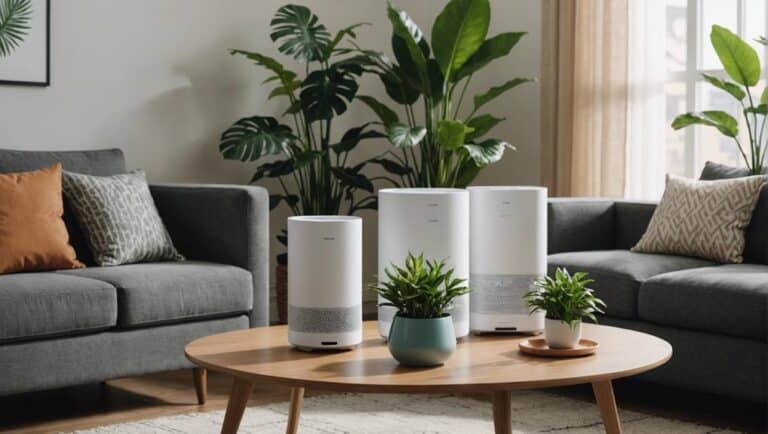
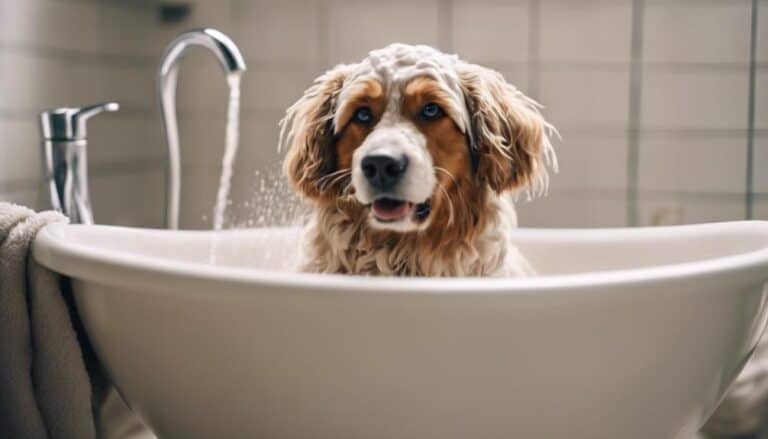
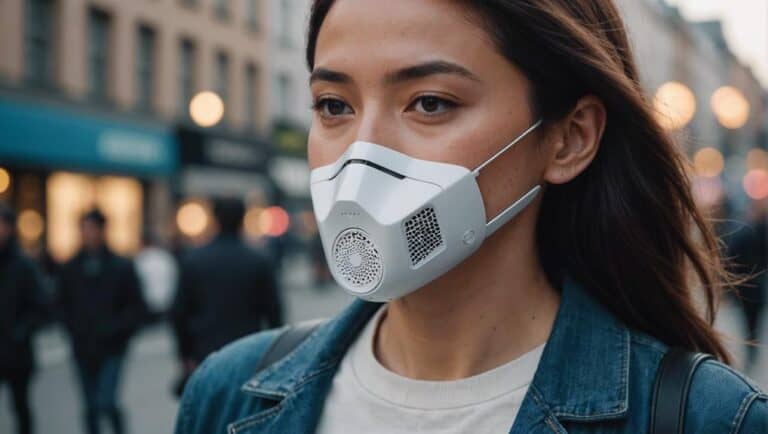
thanks, interesting read